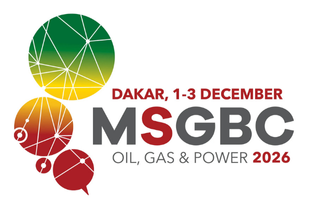Mauritania Charts New Energy Path with IPP-Led Growth
)
This strategy will take center stage at this year’s MSGBC Oil, Gas & Power conference and exhibition – taking place in Dakar on December 9-10, 2025 – where Mauritania will showcase its integrated approach to energy development. Backed by robust regulatory reforms, including a new public-private partnership framework and Africa’s first Green Hydrogen Code, the IPP-driven model is set to enhance grid reliability, support downstream industries and position the country as a competitive energy hub in West Africa.
New Regulatory Reforms
Mauritania’s IPP expansion is underpinned by comprehensive regulatory and institutional reforms. These include a new public-private partnership code, updated investment regulations and the introduction of Africa’s first Green Hydrogen Code. Collectively, these reforms aim to build investor confidence and clarify procedures around project development, grid integration and long-term revenue structures. The Power Master Plan – introduced in December 2022 – outlines how IPPs will integrate into the national grid and fuel industrial growth in key regions.
The government’s long-term energy vision includes the expansion of the BirAllah deepwater gas field, continued development of the GTA project with a target of 10 million tons of LNG per annum and stronger cross-border electricity trade. Independent producers are expected to play a critical role in delivering reliable and cost-effective power, especially in rural communities and industrial centers. With current electricity access at just 57%, significant investments are planned in both grid expansion and off-grid mini-grid systems.
Mining and Industrial Electrification
Mauritania’s IPP-driven strategy is creating new energy opportunities for its mining sector, a major energy consumer in the country. The Société Nationale Industrielle et Minière (SNIM), the state-owned iron ore producer, is enhancing energy security with a €55 million 30 MW thermal power plant under construction in Zouérat. Meanwhile, mining companies including Kinross Gold, operator of the Tasiast gold and silver mine, are pursuing hybrid solar projects to lower costs and reduce carbon emissions, signaling a shift toward more sustainable energy solutions within the sector.
Improved grid infrastructure will also support local content development and job creation, particularly in mining regions with low electrification rates. Supported by the African Development Bank, Mauritania is rolling out new electrification projects, including a $16 million mini-grid program and a 225 kV interconnection project with Mali. These efforts aim to strengthen regional energy security and expand IPP-led infrastructure across West Africa.
Green Hydrogen Momentum
Mauritania is rapidly emerging as a frontrunner in green hydrogen development, backed by exceptional solar and wind resources and a robust regulatory framework. IPPs are expected to play a key role in scaling up green hydrogen projects by providing renewable power for electrolysis. Mohamed Ould Khaled, Minister of Petroleum and Energy for Mauritania has stated the country has the capacity to produce up to 12 million tons of green hydrogen annually. Major initiatives such as Chariot Energy and Total Eren’s Project Nour and CWP Global’s Project Aman are positioned to serve export markets and domestic industries, including future green steel production. Meanwhile, Mauritania’s 2024 Green Hydrogen Code offers long-term policy certainty, creating a favorable environment for IPPs and investors to accelerate green hydrogen deployment.
Explore opportunities, foster partnerships and stay at the forefront of the MSGBC region’s oil, gas and power sector. Visit www.msgbcoilgasandpower.com to secure your participation at the MSGBC Oil, Gas & Power 2025 conference. To sponsor or participate as a delegate, please contact sales@energycapitalpower.com.

